
When the Shark Bites . . .
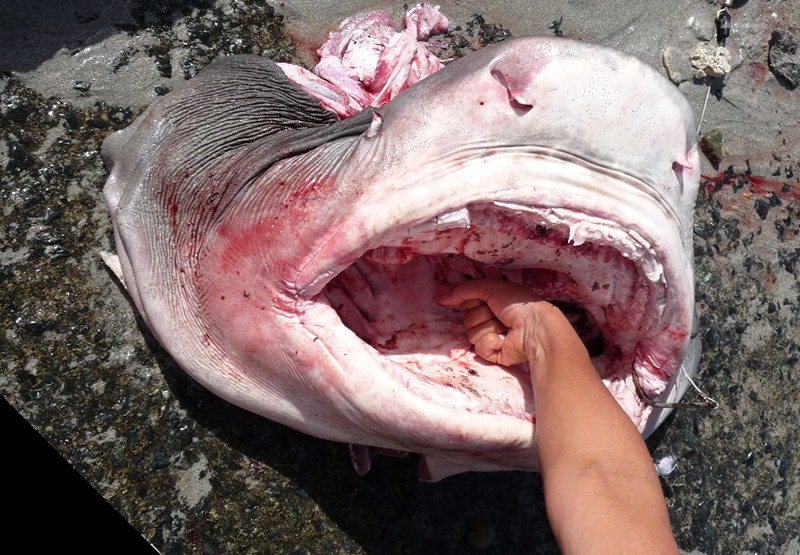
© Latitude 38 Media, LLC
"They’re cutting up a 10-ft tiger shark at Corossol," was the report that came through the Bar de ‘Oubli — Bar of the Forgotten — in Gustavia, St. Barth, French West Indies. Since we’d anchored our Leopard 45 cat ‘ti Profligate off the tiny village of Corossol, and since we often swam in the little bay there, we decided that we should check it out.
Tiger sharks are the second largest predatory sharks after the great whites. They are known for enjoying a varied diet, including fish, seals, birds, smaller sharks, squid, turtles, dolphins — and even man-made waste such as license plates and bits of tires. No wonder they are sometimes referred to as "the wastebasket of the sea." Tiger sharks are also notorious for attacks on swimmers, divers and surfers in Hawaii. Some studies suggest that the same tiger shark will return to the same beach at the same time of year to attack humans.
When we got to Corossol, all that was left was the shark’s head, minus its many rows of razor sharp teeth. According to the translation of the French-speaking fishermen, the shark had been about 10 feet long, weighed about 400 lbs, and had put up a heck of a fight. Yeah, but did they catch it in the little bay or further out to sea? The best answer we could get was that they’d caught it after motoring west of the island at high speed for about 40 minutes. The fishermen said that it’s not uncommon to come across tiger sharks, but they’re only found close to shore when the mothers are giving birth. Somewhat reassured, we nontheless checked the water carefully for dark shadows before we jumped off our cat to go swimming later that day.
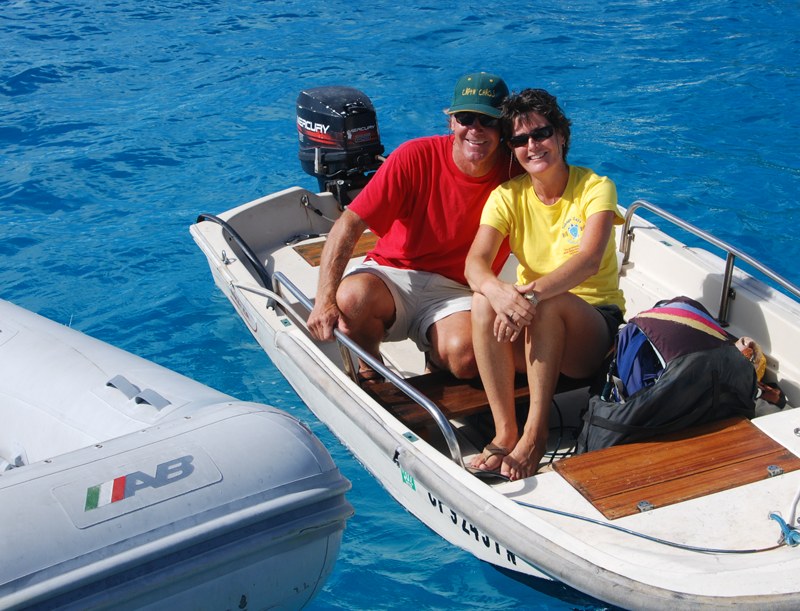
©2009 Latitude 38 Media, LLC
As we were comtemplating making the dive off our cat, who came by but ’05 Ha-Ha vets Ken and Dottie Saville of the Big Bear-based Dreamweaver, a Savega 41 trawler they’d built themselves. They reported that they’d been out five years, having done a year in the Pacific Northwest prior to doing the ’05 Ha-Ha. We were rather impressed when they told us that they’d made it from Panama to the Eastern Caribbean with their boat, which is powered by a single fuel-sipping four-cylinder diesel. That can be a wicked eastward passage across the Caribbean in even the largest of boats — such as the 289-ft Maltese Falcon. It helped that the Savilles made the passage in the fall between hurricanes, when the wind and seas are usually the most mellow. Dottie says that while cruising isn’t quite as fascinating as it was their first couple of years out, they still love it. In fact, they were thinking they might have to go back to work for a while in order to keep enjoying the lifestyle.
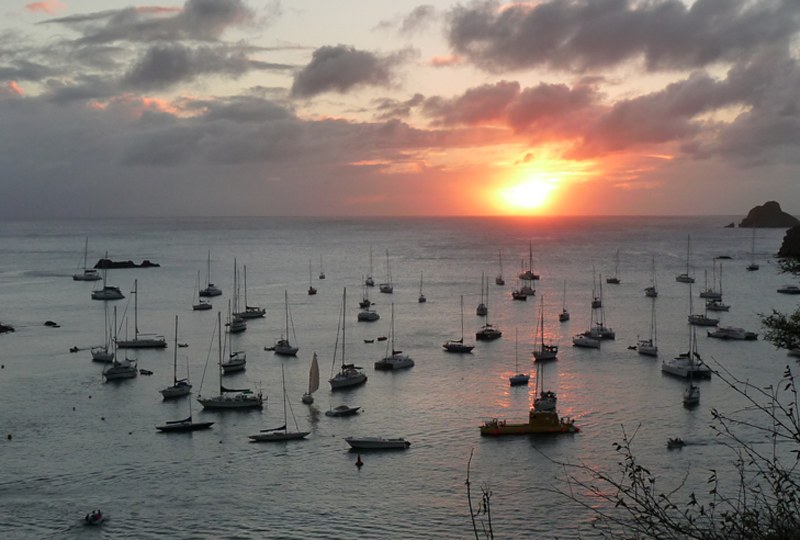
© Latitude 38 Media, LLC
In an early January ‘Lectronic, we mentioned there was the threat of a new French Revolution here in St. Barth as a result of dramatic increases in fees for boats. In the case of our 45-ft cat, it would cost an astounding $900 a month, and that just to anchor out! In the case of a 130-ft motoryacht stern-tied at the dock, it would be $10,000 a month. But after a series of meetings, led by Fafoo, a most dynamic female French cruiser who would no doubt have been manning the barricades during the great French Revolution, the price increases have been suspended. In fact, it looks as though they will be greatly reduced. While we can’t confirm it, the rumors are that it will only cost us $300 a month to anchor out. But that’s not good enough for Fafoo, who is fighting for a principle. She says the charges to anchor out are unconstitutional, and she’s raising money to have the matter adjucated in Paris. Vive la révolution!
Murder in Puerto Rico
Former Bay Area resident and professional yacht chef Sara Kuszak was raped and murdered in Ceiba, Puerto Rico, on Wednesday during her morning run. Kuszak, who was five months pregnant with her first child, had flown in from Savannah, Georgia, on Tuesday evening to meet up with her fiancé, professional yacht captain Cheshire McIntosh. According to the Puerto Rican newspaper Primera Hora, Kuszak and McIntosh, both 35, had been hired by Peter Dooney to crew on his yacht Minnow, which was moored at Marina Puerto del Rey in Fajardo, for a trip to Tortola.
A long-time runner, Kuszak took off Wednesday morning for her daily jog, reportedly after asking locals about where to go. According to police, around 9 a.m., Eliezer Marquez Navedo, 36, grabbed Kuszak as she ran by his car and forced her into the trunk. As Navedo drove to a remote location, Kuszak managed to make a frantic call to a marina employee who contacted the police. According to an Associated Press story, she was also able to call her fiancé, telling him she knew she was going to die. Authorities tracked her cell phone signal to the pocket of a blood-soaked Navedo, who confessed to raping and murdering Kuszak. Primera Hora reports that an hour after Kuszak made her desperate call for help, her half-naked body was found about 75 feet off the road with her throat slashed.
Navedo is in custody and will reportedly face charges of first degree murder, aggravated kidnapping and two counts of rape. If convicted, he could be sentenced to as much as 130 years. Meanwhile, Primera Hora has reported that Navedo’s mother served 16 years in prison after confessing to sexually assaulting and slashing the throats of two children (she was released a year ago), a crime in which police believe Navedo was involved. They’ve also reported that Navedo allegedly tried to kidnap a child just last week.
Sara Kuszak and Cheshire McIntosh met about five years ago when she was vacationing in Fiji and he was sailing in a regatta, and had been together ever since. She left her life in San Francsico in 2004 to move to his homebase of Savannah. The couple worked together on several yachts aboard which he captained and she cooked. They were to be married next month.
HMS Victory Found – No, Not That One
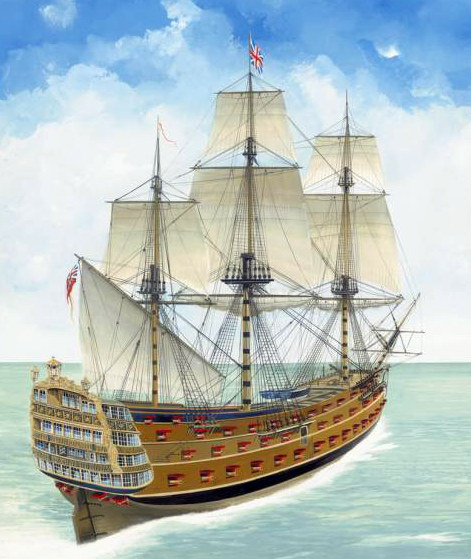
When we saw on the evening news that HMS Victory had been found, our first thought was “How could you lose a 185-ft LOD, square-rigged warship, especially one that’s in drydock?”
But of course the joke was on us. The HMS Victory recently discovered in 330 feet of water in the English Channel is a predecessor to the famous one drydocked in Plymouth, England — the one on which Admiral Nelson fought and died at Trafalgar. HMS Victory ‘#5’ was actually found last May by the American salvage company Odyssey Marine Exploration, headquartered in Tampa. The official announcement of the find was made only last week. Nelson’s Victory, launched in 1765 and currently open to the public, is the world’s oldest commissioned ship. Victory 5 had a much shorter lifespan. Launched three decades earlier in 1737, she was similar in size and armament: 175 feet long, with a beam of 50 feet and carrying more than 100 guns on three gun decks. Although that last feature classified her as a ‘first rater’ and made her the equivalent of a battleship of her day, it also made her top-heavy and unwieldy in a seaway. During her short seven-year lifespan, Victory 5 performed mostly show-of-strength duty. She was lost, along with all 1,000 hands, in a storm on the way home from Mediterranean convoy duty in 1744.
The quest for the HMS Victory ‘5’ — likened by some to the "Titanic of warships" — was more than archeological. At the time of her sinking, she was reported to be carrying more than four tons of gold coins home to Dutch investors. The present value of those would be about $500 million. Only a few cannons and other artifacts have so far been removed from the wreck. Odyssey is in negotiations with the British government on further excavation.
Louis Vuitton Pacific Series is the Real Deal
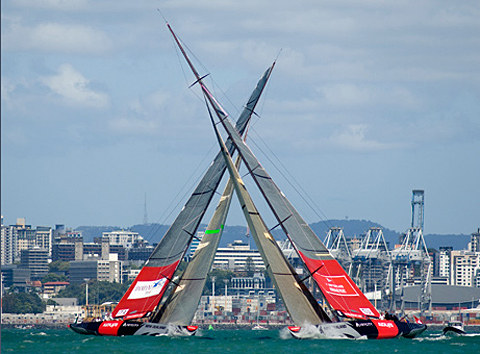
If you haven’t been following the Louis Vuitton Pacific Series in Auckland, you’re missing some great match racing action and great viewing opportunities via the very sharp and easy-to-navigate website. Comprised almost entirely of established America’s Cup teams, the field has already sailed through the first round robin and are about halfway into the second at this writing. Sailing in ‘matching’ pairs of Version 5 IACC boats — one pair provided by host Emirates Team New Zealand and the other by BMW Oracle Racing — the teams include the likes of Luna Rossa, Alinghi, Team Origin and Shosholoza.
While there’s no substitute for the Cup, the series is turning out to be pretty compelling viewing. We wonder if this model of using the top talent in provided boats — basically like every other match racing regatta in the world — respresents a more sustainable model in our current economic climate for an event like the America’s Cup. While cost-containment has been a constant polemic in the post-WWII history of the Cup, it seems like there’s always ways around whatever limitations are imposed to that end. Might this be a necessary step? After all, it’s pretty hard to escalate costs when you don’t own or manage the boat, right? One trade-off is the lack of technical innovation and the ultimate trickle-down of that knowledge to club racers — something the general public couldn’t be less concerned with. What do you think?
